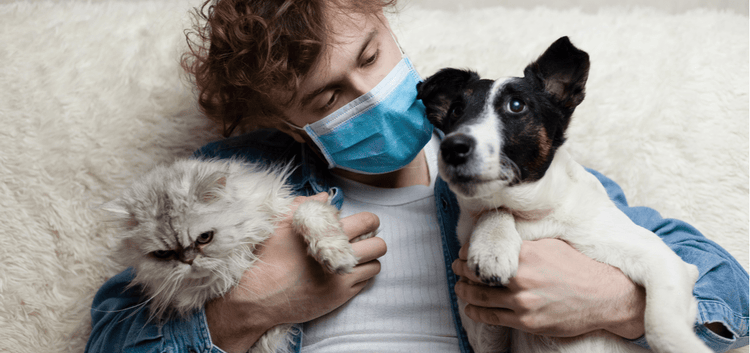
Can My Pet Give Me Parvovirus?
In 2020, viral infection has been on the minds of pet owners all across the country. COVID-19 first shut down schools and businesses in March, and infection numbers continue to rise. Even a few pets have come down with the virus, and pet parents are understandably concerned. Experts remind dog and cat lovers, however, that there is still no evidence that pets can infect their owners.
What about other kinds of viruses? Cats and dogs are susceptible to a range of common infections. Parvovirus is among the most common and, if left untreated, potentially one of the most deadly. The disease is transmitted through direct or indirect contact with infected animals and/or their bodily fluids.
Can My Pet Give Me Parvovirus?
No, your pet cannot give you parvovirus. Humans can contract a version of the parvovirus (Parvovirus B19), but it is distinct from the version that infects cats and dogs.
Can I Give My Pet Parvovirus?
Yes, it’s possible to indirectly infect your pet with parvovirus. If you’ve come in contact with infected animals, feces, or other bodily fluids, infectious particles may still be living on your hands or clothes. You can even track particles into the house in your hair or on the bottoms of your shoes.
It’s particularly important to practice good hygiene and thoroughly wash or dispose of any clothes or objects that may be contaminated. Both the feline and canine versions of the parvovirus are especially resilient. They can survive indoors for months and outdoors for years when protected from direct sunlight. They’re both even resistant to a number of common household disinfectants.
Human, Canine, and Feline Parvovirus
In humans, parvovirus is relatively mild. Like COVID-19 or the common cold, parvovirus B19 spreads by way of infected bodily fluids. While mucus and saliva are the most common vectors, the virus can also spread through blood. The Centers for Disease Control and Prevention (CDC) reports that around 20% of infected individuals don’t exhibit symptoms. Many parvovirus sufferers develop fifth disease, which can cause a mild rash, fever, and headache. Less often, infection leads to symptoms like swollen joints and anemia.
The canine and feline versions of the parvovirus are significantly more dangerous. Though both are easily prevented with vaccinations, they’re rampant in places like shelters, stores, and kennels where unvaccinated pets live together.
Feline panleukopenia (FP), the type of parvovirus that affects cats, is no longer a leading cause of death. The American Veterinary Medical Association (AVMA) writes that this is in spite of the fact that it is “everywhere in the environment.” The virus is not only shed by cats, but can also be spread from cat to cat by fleas. Canine parvovirus (CPV) is similar. Puppies under four months of age are especially susceptible and the virus is spread through dog-to-dog contact, as well as contact with infected feces.
Treating and Preventing Parvovirus
While dangerous, parvovirus is treatable in both dogs and cats. Recovery rates improve greatly when owners recognize symptoms early and quickly pursue the appropriate treatment. FP and CPV are caused by different pathogens, but they have a number of the same symptoms:
- Abdominal pain
- Dehydration
- Diarrhea
- Fever
- Lethargy
- Loss of appetite
Both illnesses can kill infected pets within a matter of days. If your dog or cat exhibits any of the above symptoms, seek out emergency veterinary care immediately. Keep infected pets separated from others, if possible, to mitigate the spread of FP and CPV. While there is no specific drug to kill either virus, doctors can bring dogs and cats back to health by aggressively addressing symptoms like dehydration. Treatment continues until the pet’s immune system is strong enough to combat the virus on its own.
Preventive measures are everything when it comes to combating parvovirus and keeping your pets healthy. Most pets receive a series of vaccinations in their youth, as well as booster shots throughout adulthood. Talk to your veterinarian about developing an appropriate schedule for your dog or cat. They can also offer guidance about keeping your pet safe and healthy during their early, most vulnerable months.